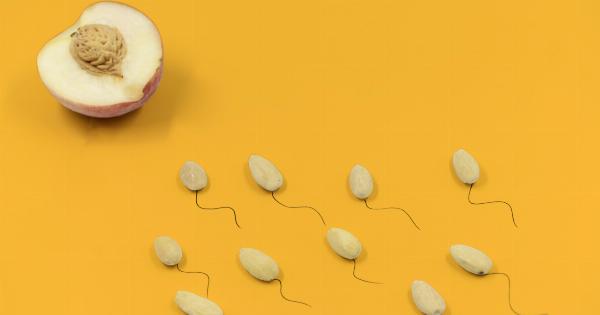The quality of sperm plays a crucial role in male fertility. A healthy sperm is a vital component for successful conception. If you and your partner have been trying to conceive without success, poor sperm quality may be a contributing factor.
The good news is that there are indicators that can help you determine whether your sperm is healthy or not. In this article, we will discuss the signs of healthy sperm that can help you identify any potential issues.
1. Adequate sperm count
The number of sperm in a given sample is known as sperm count. A healthy sperm count ranges from 15 million to 200 million sperm per milliliter (ml) of semen. A man with a lower sperm count may face difficulties in getting his partner pregnant.
Therefore, adequate sperm count is one of the most crucial signs of healthy sperm.
2. Proper sperm shape and size
Abnormal shape or size of the sperm can contribute to male infertility. In a healthy sperm sample, there should be a high percentage of sperm with a normal shape and size.
According to medical standards, a healthy sperm should have an oval head and long tail.
3. Good sperm motility
Sperm motility refers to the ability of sperm to swim forward and reach the egg. Healthy sperm should move forward rapidly in a straight line, with some slight irregular wiggling of the tail. The inability of sperm to swim properly can cause infertility.
4. Normal semen volume
Semen volume plays a crucial role in determining the chances of conception. Normal semen volume is usually 1.5 milliliters (ml) to 5 ml. If the volume is lower than this range, it may be a sign of infertility.
5. Balanced pH level
The acidity level of semen is measured through pH level. Healthy sperm is produced in an alkaline environment, with a pH level of 7.2 to 7.8.
A pH level lower than 7.2 can cause sperm to become less mobile, putting them at risk of being destroyed by natural barriers in the female reproductive tract.
6. Low number of abnormal sperm
If the percentage of abnormal sperm is higher than usual, it may be an indication of infertility. A high number of abnormal sperm could be due to genetic, environmental, or lifestyle factors.
7. Appropriate fructose levels
The presence of fructose helps in nourishing the sperm cells. Fructose is produced in the seminal vesicles. Therefore, the absence of fructose can be a sign of blockage or damage to the seminal vesicles or other parts of the male reproductive system.
8. Clear and free from infection
Semen should be free from infection, blood, or any other substances. It should have a translucent or whitish color. Presence of pus cells, blood cells or infection might lead to infertility.
9. Quick liquefaction time
The semen after ejaculation gets a thick texture due to a protein called semenogelin. Within 30 minutes of ejaculation, the protein gets broken down by an enzyme called liquefying enzyme.
A healthy sperm sample has a quick liquefaction time (within 30 minutes). If it takes more than an hour to liquefy, it may indicate problems with the prostate gland, which could potentially affect sperm function.
10. Proper hormone levels
Proper levels of hormone also contribute to the quality of sperm. Hormonal imbalance can lead to reduced sperm count, motility, and abnormal sperm shape.
Testosterone, follicle-stimulating hormone (FSH), and luteinizing hormone (LH) are some of the hormones that impact sperm production. Low levels of these hormones can disrupt sperm production leading to infertility.





























